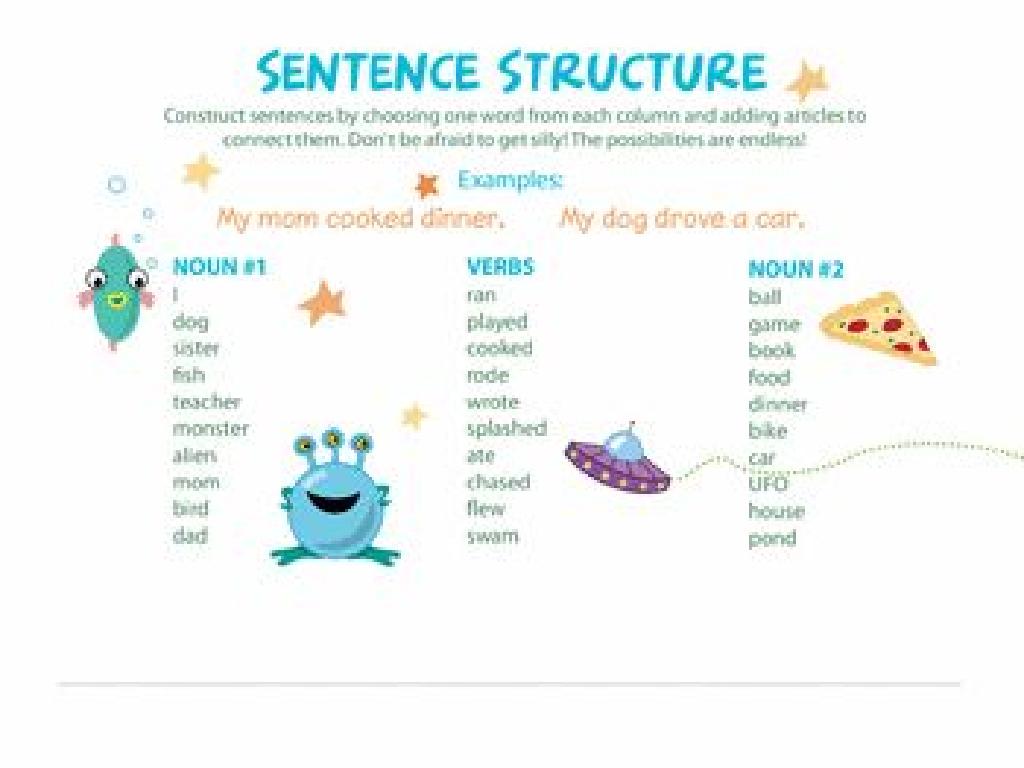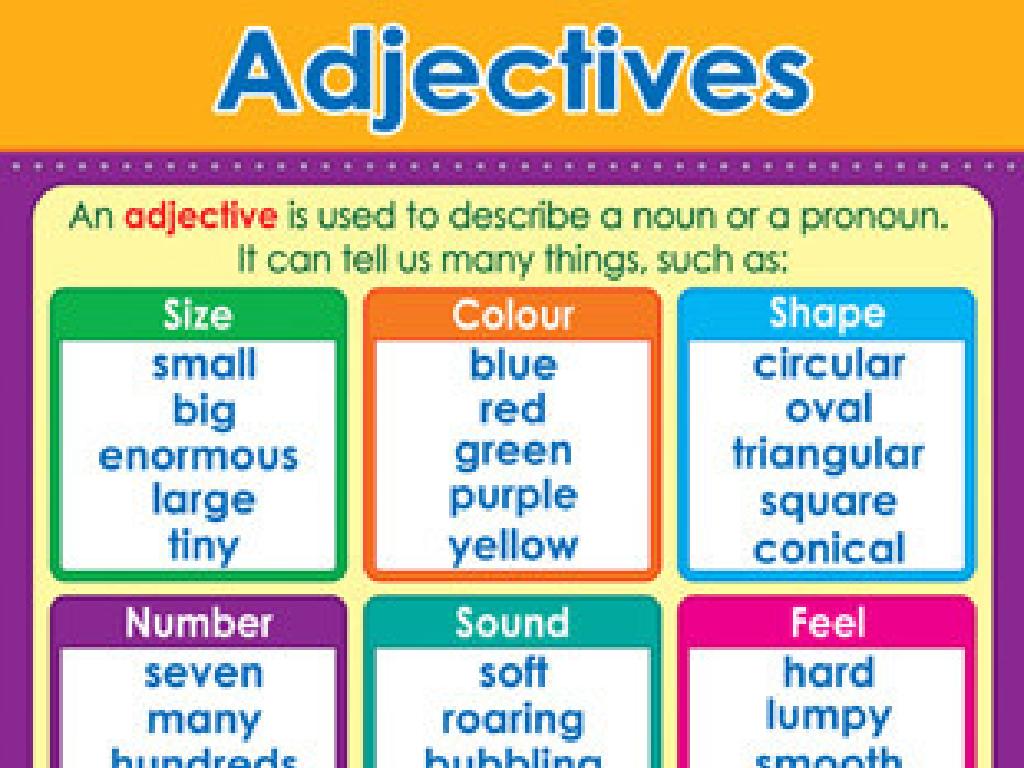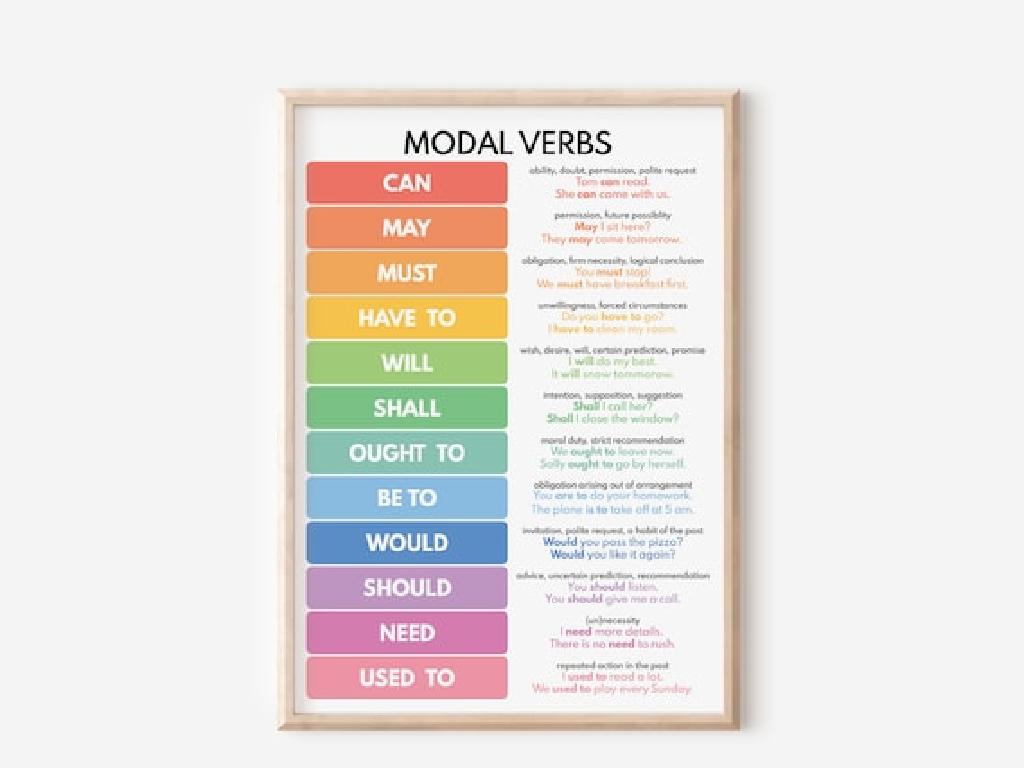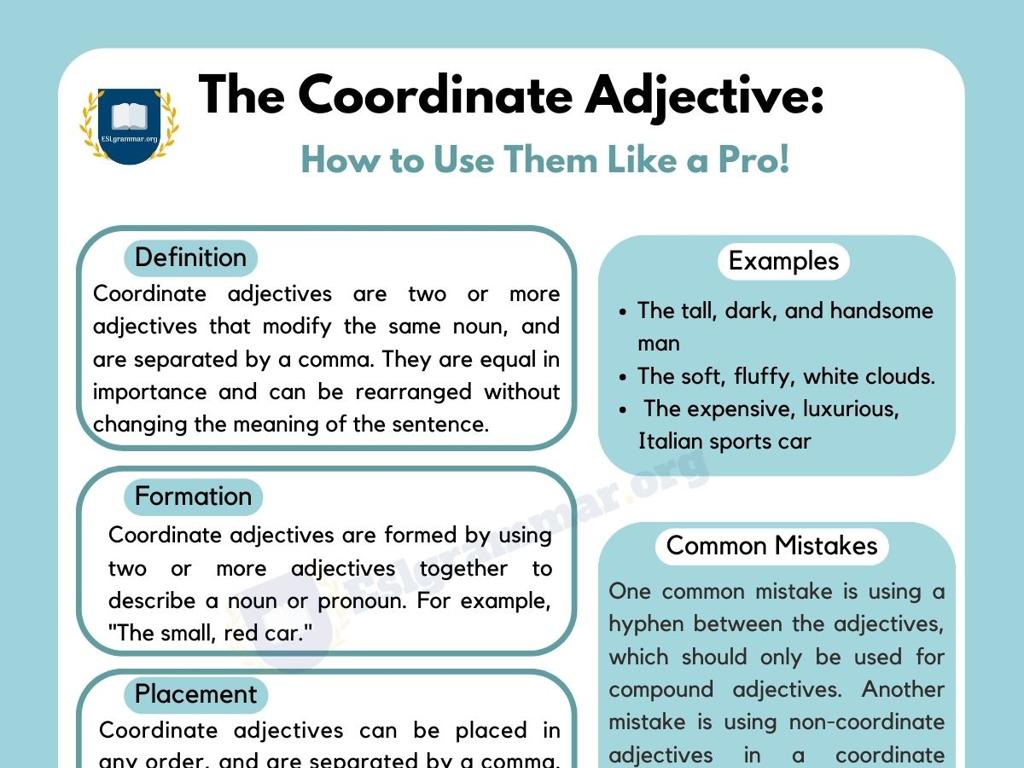Compare And Order Decimals
Subject: Math
Grade: Seventh grade
Topic: Decimals
Please LOG IN to download the presentation. Access is available to registered users only.
View More Content
Welcome to Decimals!
– Grasping the concept of decimals
– Decimals represent fractions of a whole, like 0.5 is half
– Decimals in everyday life
– Used in money, measurements, and more
– Reviewing decimal basics
– Refresh on decimal places and values
– Comparing and ordering decimals
– Learn to determine which decimals are greater or less
|
This slide introduces the concept of decimals and their relevance to everyday life. Begin by explaining that decimals are a way of expressing fractions and parts of numbers, which is a foundational concept in mathematics. Highlight how decimals are used in various aspects of daily life, such as in currency, measurements, and time. Provide a quick refresher on what the students already know about decimals, including place value and how to read them. Then, transition to the main learning objective: comparing and ordering decimals. Emphasize the importance of understanding decimal place value when determining the size of decimals relative to one another. This will set the stage for more in-depth practice and application of these skills in subsequent activities.
Understanding Decimals
– Define a decimal
– A number with a fraction part, separated by a decimal point
– Role of the decimal point
– It separates the whole number from the fractional part
– Whole numbers vs decimals
– Whole numbers have no decimal or fractional part
– Comparing and ordering decimals
– Use the decimal point to line up numbers for comparison
|
This slide introduces the concept of decimals, which are numbers that contain a decimal point to represent a whole number plus a fraction of a whole. Emphasize the importance of the decimal point, as it is crucial in distinguishing between whole numbers and decimals. Explain that whole numbers are to the left of the decimal point, while the fractional part is to the right. When comparing and ordering decimals, it’s essential to line up the decimal points to see which numbers are larger or smaller. Provide examples of each concept to solidify understanding, and prepare exercises where students can practice comparing and ordering decimals.
Understanding Decimals: Place Values and Comparison
– Grasp decimal place value
– Each place represents a power of 10. For example, 0.5 is 5 tenths
– Compare digit values
– Compare digits in the same place value. E.g., in 0.65 and 0.52, 5 in the tenths place is greater than 2
– Reading decimals correctly
– Say the number as a whole, then the decimal part as individual digits. E.g., 0.65 is ‘zero point six five’
– Practice ordering decimals
|
This slide introduces students to the foundational concepts of decimals, focusing on place value and the comparison of decimal numbers. Start by explaining that each place to the right of the decimal represents a fraction with a denominator that is a power of 10. Emphasize the importance of aligning decimal points when comparing two decimals. Practice reading decimals aloud to reinforce the concept that each digit is read individually after the decimal point. Conclude with exercises where students order sets of decimals to apply what they’ve learned. This will prepare them for more complex operations involving decimals.
Comparing Decimals
– Use >, <, and = symbols
– Rules for comparing decimals
– Align decimals, compare digit by digit
– Example: 0.75 vs 0.8
– 0.75 < 0.8 because 75 is less than 80
– Practice with different decimals
|
This slide introduces students to the concept of comparing decimals using the greater than, less than, and equal to symbols. Emphasize the importance of aligning decimal points and comparing digits in the same place value. For example, when comparing 0.75 and 0.8, we add a zero to make it 0.80 so that both numbers have two decimal places, making it easier to see that 0.75 is less than 0.8. Encourage students to practice with additional examples, ensuring they understand how to compare decimals correctly. Provide a variety of problems with different decimal places for students to solve.
Ordering Decimals
– Order decimals least to greatest
– Order decimals greatest to least
– Example: 0.3, 0.25, 0.305
– Arrange: 0.25, 0.3, 0.305
|
When ordering decimals, it’s important to look at the highest place value first and compare each digit. For least to greatest, start with the smallest value. For greatest to least, start with the largest value. In our example, we compare tenths place first, then hundredths, and so on. Students should practice with different sets of decimals to become comfortable with this concept. Encourage them to line up the decimals vertically by the decimal point to make it easier to compare the place values.
Let’s Practice: Comparing and Ordering Decimals
– Class activity on decimals
– Work in pairs on worksheet
– Compare your decimal answers
– Use greater than, less than, or equal to signs
– Share findings with the class
|
This slide introduces a class activity focused on comparing and ordering decimals. Students will work in pairs to complete a worksheet that challenges them to use their knowledge of decimal places and values. They will need to determine which decimals are larger or smaller and arrange them in order. After completing the worksheet, each pair will share their answers with the class, fostering a collaborative learning environment. For the teacher: Prepare a worksheet with a mix of decimal comparison and ordering exercises. Ensure there are enough variations so that students can engage in meaningful discussions during the sharing session. Possible activities could include ordering decimals from least to greatest, comparing decimals using mathematical symbols, and finding equivalent decimal values.
Real-life Applications of Decimals
– Decimals in money transactions
– Every cent is a part of a dollar, like $5.75
– Decimals in measurements
– Length (meters), weight (kilograms), volume (liters) often use decimals
– Decimals in sports statistics
– Batting averages, points per game, and other stats are expressed with decimals
|
This slide aims to show students how decimals are not just abstract concepts but are used in everyday life. For instance, when dealing with money, decimals are essential for representing cents in transactions. In measurements, decimals are used to express precision in length, weight, and volume, which is crucial in various fields like construction, cooking, and science. In sports, decimals are used to calculate player statistics, which can affect game strategy and player evaluations. Encourage students to think of other areas where decimals are used and discuss the importance of accuracy in these decimal representations.
Class Activity: Decimal Scavenger Hunt
– Find decimal examples in class
– Compare and order your decimals
– Which decimal is greater or smaller?
– Present your decimal discoveries
– Share how you determined the order
– Reflect on the activity
– Discuss what you learned
|
This interactive class activity is designed to engage students with the practical application of decimals in their immediate environment. Students will search the classroom for objects or references that include decimal numbers, such as on rulers, clocks, or textbooks. They will then compare the decimals to determine which are greater or smaller and order them accordingly. Afterward, students will present their findings to the class, explaining their thought process and how they decided on the order of the decimals. This will help reinforce their understanding of decimal values and comparison. Possible variations of the activity could include finding decimals in a set range, ordering decimals from least to greatest, or finding real-life applications of decimals. The reflection at the end will allow students to discuss what they learned and how they can apply this knowledge outside of the classroom.
Conclusion & Homework: Decimals Mastery
– Recap: Comparing decimals
– Review how to determine which decimals are greater or less
– Recap: Ordering decimals
– Practice arranging decimals from smallest to largest
– Mastery of decimals is crucial
– Understanding decimals is essential for math proficiency
– Homework: Decimal worksheet
– Complete the provided worksheet to practice these skills
|
As we conclude today’s lesson, remember that the ability to compare and order decimals is a fundamental skill in mathematics that will be used throughout your academic and everyday life. It’s important to be comfortable with these concepts as they form the basis for more advanced math topics. For homework, you have a worksheet that will help reinforce today’s lesson by providing additional practice. Make sure to attempt all problems and bring any questions you have to the next class. This practice will ensure you have a solid understanding of how to work with decimals.






